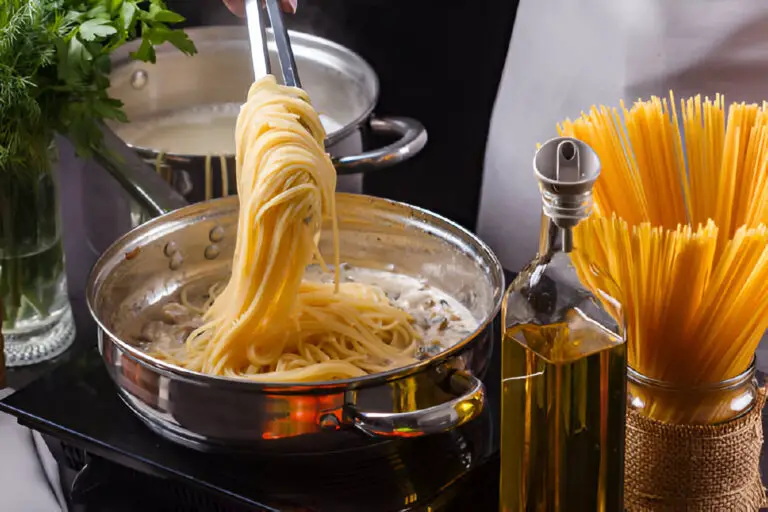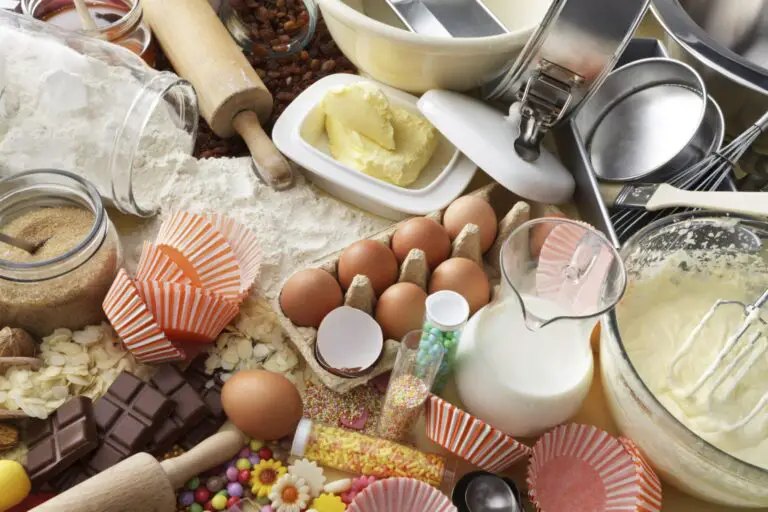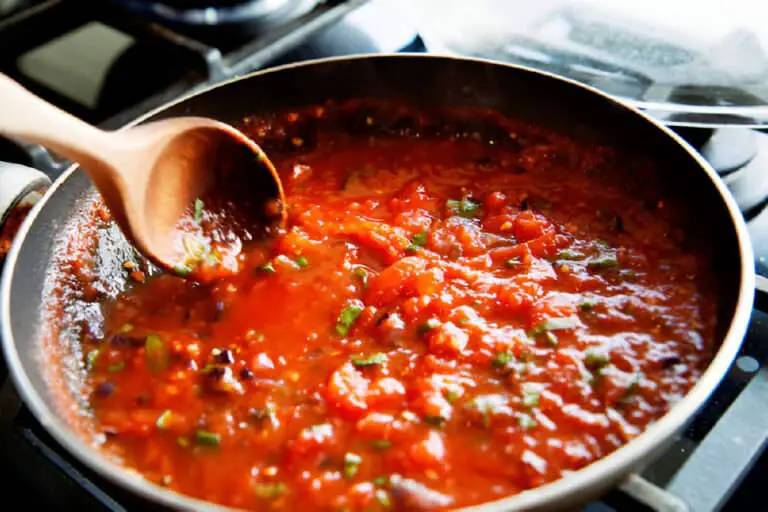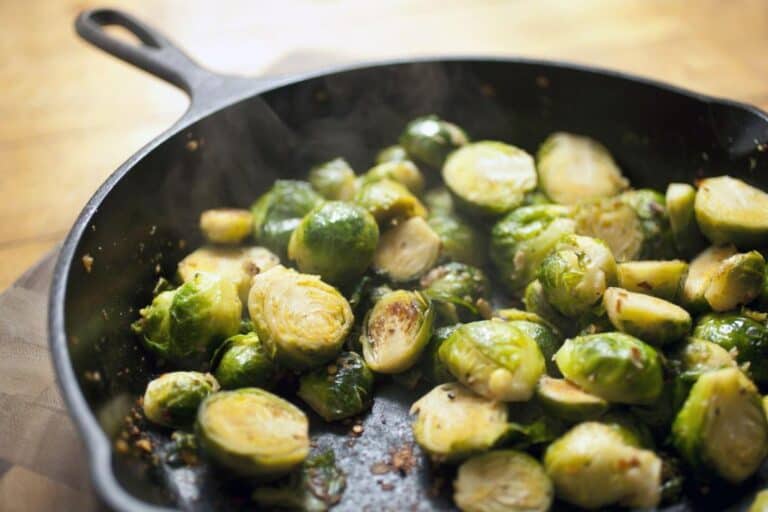Mastering the Art of Curing Bacon from Wild Boar and Domestic Pigs
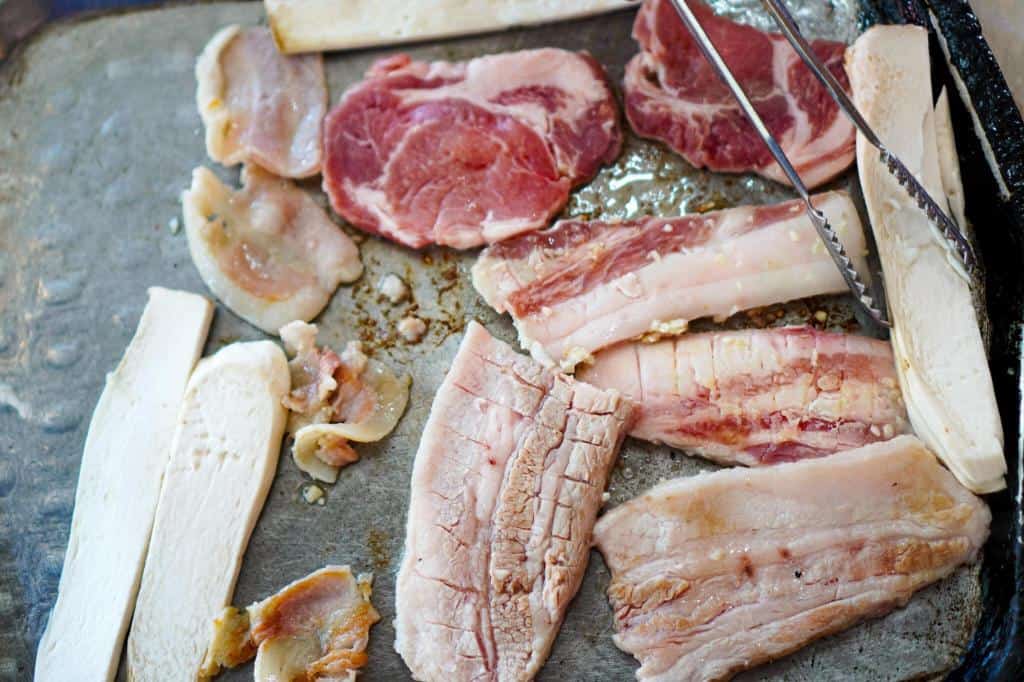
Bacon is an irresistible savory treat that holds a special place in the hearts and taste buds of food enthusiasts around the world. Whether sizzling on a lazy Sunday morning or elevating a gourmet dish, bacon adds its unique smoky and salty flavors to any meal it graces.
But did you know that not all bacons are created equal? Enter wild boar and domestic pig bacon. They are two distinct culinary experiences. Each slice weaves a tale of its origin.
Wild boar bacon, with its robust gamey flavor and leaner meat, offers an adventurous twist for traditional bacon lovers. On the other hand, domestic pig bacon boasts a milder profile, with marbled fat providing an unmatched richness. Each variety serves up distinctly delicious options for those seeking new taste sensations.
In this comprehensive guide, we will unlock the art of curing perfect wild boar and domestic pig bacon. Whether you’re an aspiring home cook eager to explore new flavors or a seasoned chef looking for inspiration beyond conventional methods, join us on this journey. We’ll unravel the nuances behind crafting exceptional strips of flavorful joy.
Get ready to elevate your bacon-making prowess. From choosing quality cuts to mastering essential techniques, uncover new possibilities for your culinary adventures. So grab your apron and sharpen those knives, because it’s time to embark on a tantalizing quest into the realm of cured pork delights!
Understanding Curing Bacon
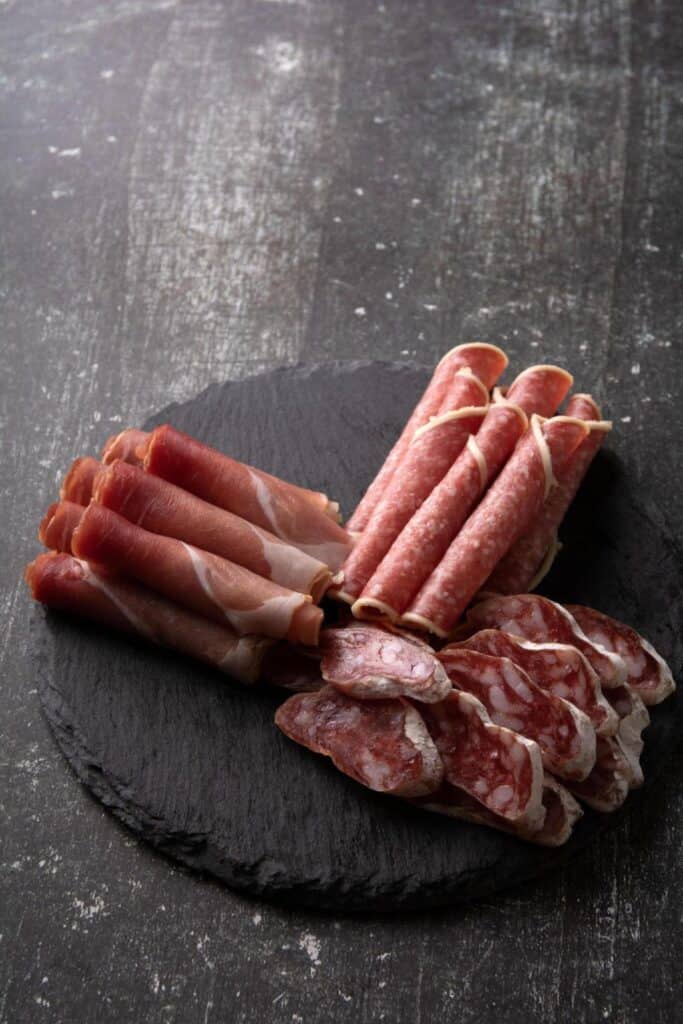
Curing is a time-honored technique used for preserving meat and enhancing its flavor. In simple terms, curing involves the process of adding salt to meat in order to draw out moisture and inhibit the growth of bacteria. This method extends the meat’s shelf life. It also imparts unique flavors, which no other cooking method can achieve.
Salt plays a crucial role in curing as it acts as a natural antimicrobial agent. When salt comes into contact with the meat, it interacts with its proteins. This denatures them, preventing bacterial growth. Additionally, salt helps to remove excess water from the meat through osmosis, creating an environment that is inhospitable for bacteria to thrive.
It’s important to note that different cuts of wild boar and domestic pig bacon will require varying levels of salting during the curing process. For instance, leaner cuts like loins or tenderloins may need less salt compared to fattier cuts such as belly or jowl.
The key here is experimentation. Start with a fundamental ratio per pound (or kilogram) of meat within a recommended range. Then, modify it according to personal preference and desired outcome.
Why Cure Your Own Bacon?
Curing your own bacon at home offers a multitude of benefits that go beyond simply having delicious bacon at your fingertips. Firstly, taking on the task of curing bacon allows you to have complete control over the quality of the ingredients used.
By carefully selecting high-quality pork belly or wild boar belly, you ensure that you’re starting with the best possible foundation for your bacon. This control extends to the curing process itself. You can adjust the amount of salt, sugar, and any additional seasonings to suit your taste preferences perfectly.
Furthermore, the art of curing bacon is not just about the end result—it’s also about the journey. Engaging in the process of curing bacon connects you with time-honored traditions. These traditions have been passed down through generations.
There’s a sense of pride and satisfaction that comes from mastering this age-old technique. You create something delicious with your own hands. It’s a culinary journey that allows you to slow down. You can appreciate the craftsmanship involved and savor the rewarding experience of creating something truly special.
Selecting Meat: Choosing the Perfect Cut for Curing
When it comes to creating exceptional bacon, the quality of your meat is paramount. Whether you’re working with wild boar or domestic pig cuts, selecting the right piece plays a vital role in the final outcome. The first step is to ensure that the meat you choose is fresh and of high quality.
For wild boar bacon enthusiasts, opting for leaner cuts like loin or tenderloin can yield mouthwatering results. These cuts have less fat marbling, resulting in a leaner and slightly gamey flavor profile. If you prefer a more traditional taste, similar to domestic pig bacon, consider using fattier cuts like shoulder or belly from farm-raised wild boars.
Similarly, when selecting domestic pig cuts for curing purposes, pay attention to factors such as breed and diet. Heritage breeds known for their rich flavor and natural fat distribution are highly prized among charcutiers. Berkshires and Tamworths are renowned examples. They produce succulent pork with juicy fat layers, perfect for rendering into luscious strips of bacon.
The Curing Bacon Process, Step-by-Step
1. Dry Curing
Dry curing is a cherished tradition that infuses meat with rich flavor while preserving it for extended enjoyment. Whether you’re working with wild boar or domestic pig, mastering the art of dry curing bacon begins with selecting the finest cuts. It also involves embracing meticulous preparation.
Essential Steps for Dry Curing Bacon:
- Selecting Quality Meat: Choose high-quality cuts of wild boar or domestic pig with ample fat content. The fat contributes to both flavor and texture, resulting in a more succulent end product.
- Determining Salt Ratio: Establishing the right salt ratio is crucial. Aim for 2-3% kosher salt by weight relative to the total weight of the meat being cured. Adjustments can be made based on personal preference for saltiness.
- Preparing the Cure: Mix the selected salts and spices thoroughly in a bowl to create the curing mixture. Rub the mixture generously onto all sides of the meat, ensuring even distribution for optimal flavor development.
- Ensuring Proper Hygiene: Maintain strict hygiene practices to uphold food safety standards. Handle raw pork with clean hands or wear disposable gloves, especially when working with larger quantities.
- Container Selection: Select non-reactive containers or ziplock bags. Place the cured meat pieces in the containers or bags, ensuring they fit snugly without overlapping. This prevents any cross-contamination and allows for uniform curing.
- Storage Conditions: Store the sealed containers in a cool, dry place with temperatures ranging between 36°F (2°C) and 40°F (4°C). Avoid exposure to direct sunlight or humidity, as these factors can compromise the curing process.
- Patience and Observation: Allow the cure to work its magic over several days or weeks, depending on the thickness of the meat. Generally, thicker slabs may require around seven days per pound (450 grams), while thinner pieces may need less time. Regular observation and checks are essential to ensure the desired level of curing and flavor development.
2. Wet Curing Brining
If you crave bacon with a milder flavor and a tender texture, wet curing brining is the ideal technique for you. Dry curing involves applying a mixture of salt and spices directly to the meat’s surface. In contrast, wet curing immerses the meat in a flavorful brine solution. This allows the meat to soak up and absorb the flavors gradually.
Essential Steps for Wet Curing Brining:
- Preparing the Brine Solution:Start by creating a flavorful brine solution. Use water, salt, sugar, and aromatics such as garlic, bay leaves, or herbs like thyme or rosemary. Aim for a ratio of around 1 cup of kosher salt per gallon of water. Adjust the sweetness by varying the amount of sugar according to your taste preferences.
- Immersing the Meat: Once the brine solution is prepared, immerse your pork belly into it, ensuring that the meat is completely submerged. You may need to weigh it down with something heavy to prevent it from floating up and ensure even brining.
- Determining Brining Duration: The duration of wet curing will vary depending on factors such as personal preference and the thickness of your pork belly slices or whole piece. As a general guideline, allow at least one day for every quarter-inch thickness of pork belly. Some recipes recommend anywhere from 3 days up to 2 weeks for optimal flavor infusion.
- Monitoring and Adjusting: Different cuts of meat may require slightly different durations due to variations in size and density. It’s essential to monitor the brining process closely and adjust the duration accordingly. An extra half-day can make all the difference between perfectly seasoned bacon and a less flavorful result.
- Experimenting with Flavor Profiles: Wet curing offers versatility in flavor profiles. It allows you to experiment with different spices or seasonings in your brines. Consider adding ingredients such as paprika powder, black peppercorns, crushed garlic cloves, or other herbs and spices to customize the flavor to your liking.
Curing Bacon from Wild Boar
Wild boar bacon offers a unique flavor profile compared to its domestic counterpart. Here’s how to cure bacon from wild boar:
| Ingredients | Instructions |
| Wild Boar Belly | Choose a fresh, high-quality piece of wild boar belly. |
| Salt | Use kosher or sea salt for the curing mixture. |
| Sugar | Add sweetness to balance the saltiness. |
| Optional Seasonings | Experiment with herbs, spices, and aromatics. |
Curing Bacon from Domestic Pigs
Curing bacon from domestic pigs follows a similar process but offers more familiarity in terms of taste and texture. Here’s a basic recipe:
| Ingredients | Instructions |
| Pork Belly | Select a well-marbled piece of pork belly. |
| Salt | Ensure even distribution for proper curing. |
| Sugar | Adjust the sweetness to your liking. |
| Black Pepper | Add a hint of spice and depth of flavor. |
| Optional Seasonings | Get creative with your choice of seasonings. |
Smoking Techniques and Wood Flavors for Bacon
Smoking is a crucial step in the bacon-making process, enriching its flavor profile whether crafted from wild boar or domestic pig. By infusing the meat with subtle smokiness, each bite becomes an experience of depth and complexity. Let’s delve into the various smoking techniques and wood flavors that can elevate your bacon to new heights.
Smoking Techniques
Cold Smoking: This method exposes the meat to smoke at temperatures below 100°F (38°C). Cold smoking ensures a milder, smoky flavor. It preserves the meat’s natural texture. This makes cold smoking ideal for those who prefer a subtle infusion of smoke.
Hot Smoking: Utilizing higher temperatures, hot smoking not only imparts a rich smoky taste but also cooks the bacon more efficiently. This technique achieves that classic crispness on bacon slices while delivering robust flavors.
Wood Flavors for Smoking Bacon
Mesquite: Known for its strong and earthy flavor, mesquite wood adds an intense and bold profile to bacon. It’s perfect for those craving a robust smoky taste that leaves a lasting impression.
Applewood: Offering delicate sweetness, applewood infuses bacon with a subtle fruity aroma that complements both wild boar and domestic pig varieties. It adds a light and refreshing twist to your bacon experience.
Hickory: Hickory wood has robust, slightly sweet undertones. It is a staple for traditional American-style bacon flavors.
Pecan: Pecan wood brings a slightly nutty essence to smoked bacon. It adds complexity without overshadowing other ingredients. It’s an excellent choice for creating nuanced and well-balanced bacon dishes.
Tips for Perfect Bacon
- Consistency is Key: Measure your curing ingredients accurately to ensure consistent results.
- Patience Pays Off: Allow the bacon to cure for the recommended time for optimal flavor and texture.
- Experiment with Flavors: Don’t be afraid to try different seasonings and spices to create unique bacon flavors.
- Safety First: Follow food safety guidelines to prevent contamination and ensure your bacon is safe to eat.
| Also see: Is Restaurant’s Bacon Already Cooked? |
Troubleshooting Curing Bacon Common Issues :
Curing bacon is a delicate process that requires attention to detail and precision. While it may seem intimidating at first, many common issues can be easily resolved with a few adjustments. Let’s explore some of the most frequently encountered problems during the curing process. We’ll offer practical troubleshooting tips to help you achieve perfect results every time.
One common issue that arises when curing bacon is an uneven distribution of cure or spices. This can lead to sections of the bacon being saltier or more flavorful than others.To solve this problem, evenly rub the cure mixture onto all surfaces of the pork belly or wild boar meat. Then, place it in a curing container. Take your time massaging the cure into every nook and cranny, ensuring consistent coverage throughout.
Beginners often face another issue: excessive moisture retention during curing. This results in a slimy texture, rather than the desired firmness in bacon. If you find yourself dealing with excess moisture, try using less liquid when mixing your cure ingredients next time around. Additionally, ensure proper airflow by regularly flipping or rotating your cuts while they are curing – stagnant air could contribute to water buildup on the surface.
Lastly, inconsistent temperature control can also pose challenges during the curing process. Fluctuations in temperature can affect how quickly or thoroughly your meat cures and lead to uneven results.Investing in a reliable thermometer will allow you to monitor temperatures accurately throughout each stage of the process. This guarantees consistent and optimal outcomes for your bacon delights.
In Conclusion
Curing bacon from wild boar or domestic pigs is a gratifying culinary adventure. It allows you to create delicious, customized bacon that is sure to impress. By mastering the art of bacon curing, you’ll elevate your cooking skills and delight your taste buds with every crispy, flavorful bite. So, roll up your sleeves, gather your ingredients, and embark on the journey to bacon perfection!

